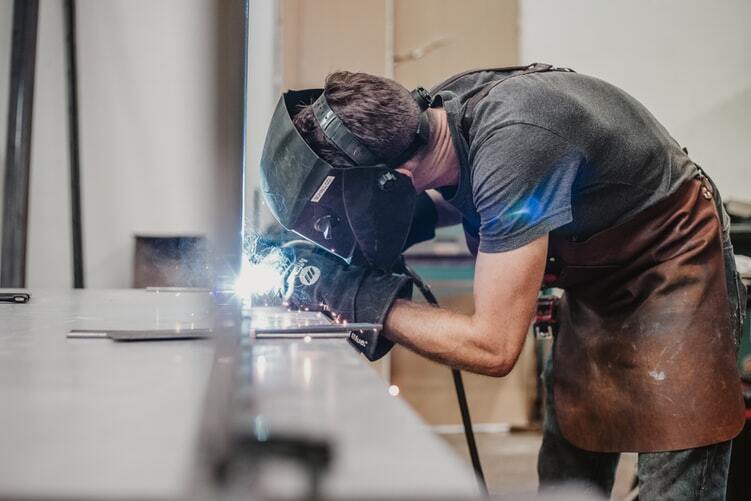Blog
Tradies beware: Five workplace cancer risk factors
19 August 2021

August is Tradies National Health Month, and Cancer Council are using this month to highlight some common workplace cancer risk factors for tradies.
Although Australia’s trade industry makes up less than one-third of our workforce, it accounts for 58 per cent of serious claims for worker’s compensation and over two-thirds of work-related traumatic injury fatalities in Australia. Being a tradie clearly carries risks. However, something that is not entirely reflected in these statistics is the burden of work-related cancers. It is estimated that approximately 6.5 percent of new cancer cases diagnosed in Australia every year are caused by workplace risk factors. This amounts to around 5000 workplace cancers every year! Tradies are among those who are most likely to be exposed to carcinogens (cancer-causing agents) while at work. That’s why, this Tradies National Health Month we are urging Australian tradies to be aware of the carcinogens they can be exposed to at work, and to always use appropriate control measures to protect themselves. Here are five common cancer risk factors tradies need to be aware of in the workplace:
1. Diesel engine exhaust (DEE) emissions
It is estimated that 1.2 million Australian workers are exposed to diesel engine exhaust every year, making it the second most common carcinogen workers are exposed to after solar ultraviolet radiation. It is created by burning diesel fuels and contains a mixture of airborne chemicals that can increase your risk of developing long-term health problems, including lung cancer, when breathed in. Tradies who operate or work around heavy machinery or construction and mining vehicles powered by diesel fuel are at increased risk of exposure and should make sure they use appropriate control measures to protect themselves.
2. Silica dust
Silica is naturally occurring and is found in sand, stone, rock, gravel, and clay. It is used in materials like artificial stone, bricks, tiles and concrete. When these products are worked on by cutting, grinding, drilling, or polishing, the silica is released as a fine dust, commonly called silica dust. This dust is harmful when inhaled, and can lead to the development of silicosis, kidney disease, chronic obstructive pulmonary disease, and lung cancer. Tradies in the mining and construction industries are among those who have the greatest exposure to silica dust.
3. Asbestos
Tradies including plumbers, chippies, and sparkies who work in the building and construction industry are likely to encounter asbestos at some stage. Although asbestos was banned in Australia in 2003, it can still be found in millions of homes and public and commercial buildings built prior to 2003. Breathing in asbestos fibres can increase your risk of lung cancer, mesothelioma, asbestosis, and other diseases. Always check if asbestos is present before you begin work!
4. Welding
During welding activities, tradies can be exposed to carcinogens through the production of contaminants in welding fumes and ultraviolet radiation in the welding arc. Some welding fumes are easy to see but many are invisible. Exposure to these fumes can cause lung cancer. Exposure to the ultraviolet radiation produced by the welding arc and reflected off hard and smooth surfaces can cause eye melanoma, ‘welder’s flash’ or ‘arc eye’ (painful inflammation of the cornea), cataracts, and burns to exposed skin. If adequate control measures are not in place, welders and people working near welding activities are at increased risk of being exposed to these carcinogens.
5. Wood dust
Wood dust is produced via woodworking activities including the manufacture of wood products, machine operations, and hand or machine sanding. Tradies who work with pressed wood products such as plywood, particleboard, and MDF also run the risk of formaldehyde exposure, as formaldehyde-based resins are used to glue together the wood fibres. The formaldehyde can then be released into the air when these wood products are worked on. Prolonged exposure and inhalation of wood dust and formaldehyde can cause cancer of the nasal cavity, sinuses and nasopharynx, as well as leukaemia. It is estimated that around 16% of cancers of the nose and nasal sinuses in men could be due to wood dust exposure.
There are effective protection measures for each of these potential risks. Knowing the risks can make the difference in stopping cancer before it develops.
For more information and a summary of control measures for each of the above carcinogens, please visit Cancer Council’s Workplace Cancer webpages.
